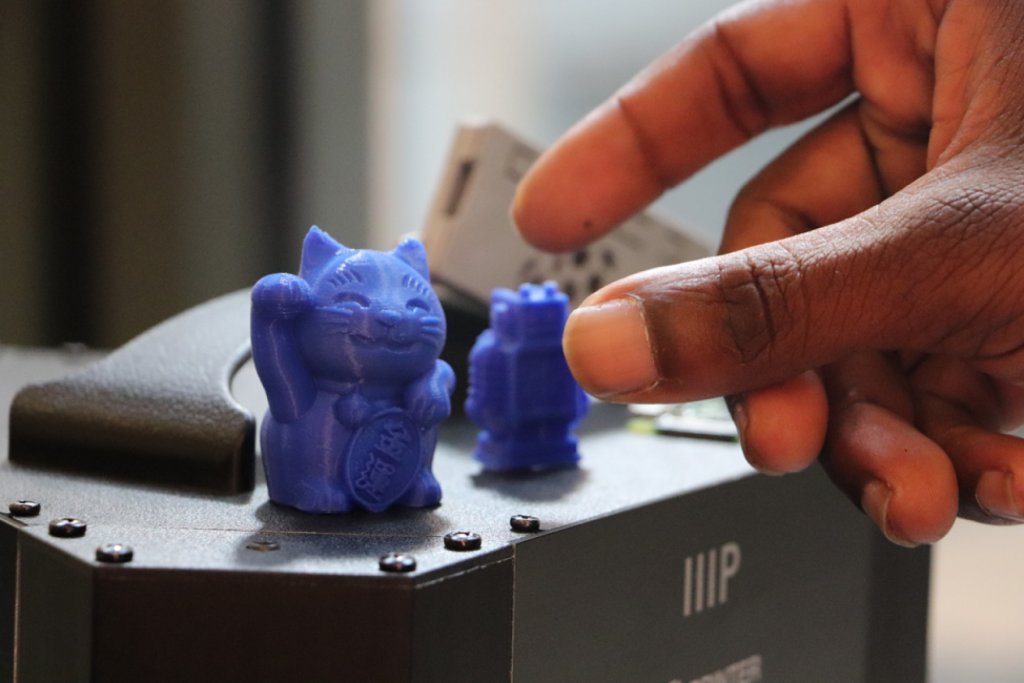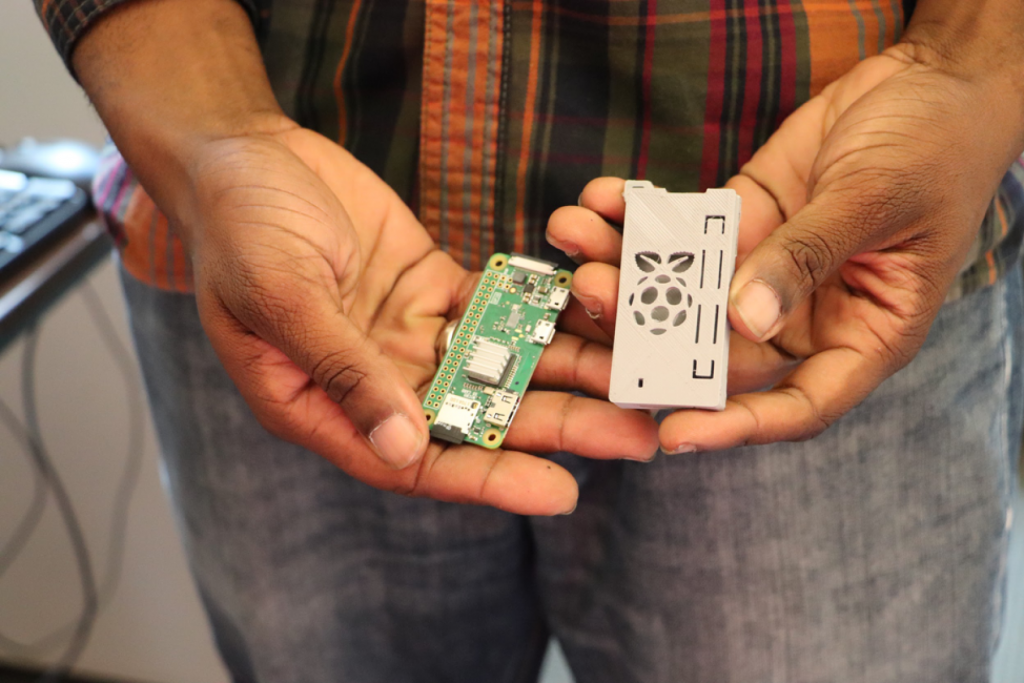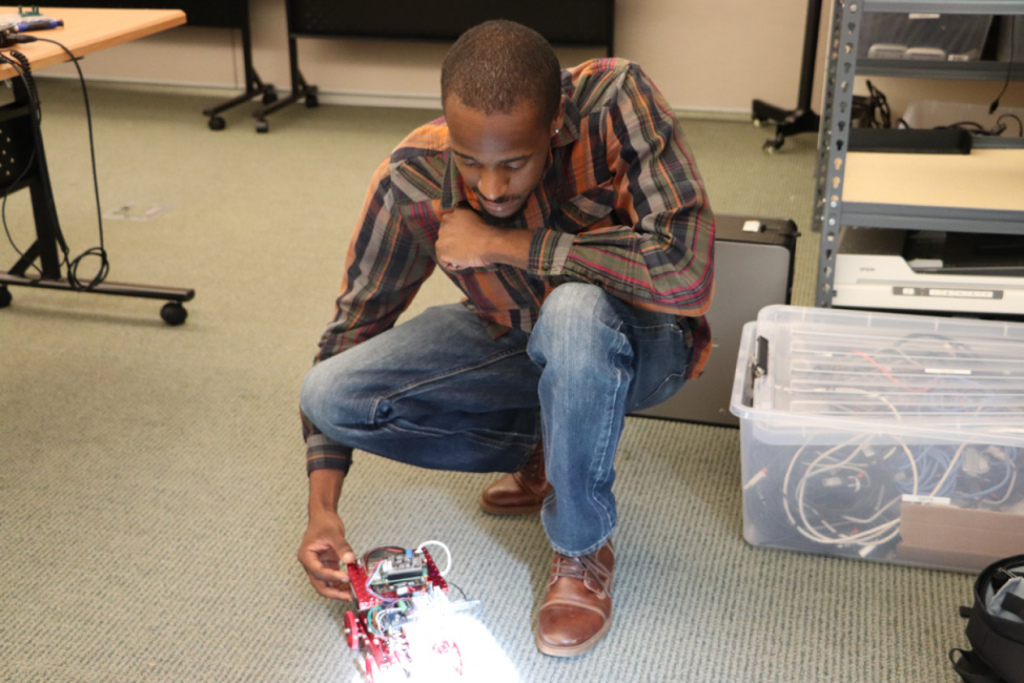Article Originally Appeared in WOSU.org – Leticia Wiggins

Credit Leticia Wiggins / WOSU/WOSU
During an early shift at FedEx, Danavan McIntosh made his way down a tall ladder. He’d done it a million times before. This time, he felt himself falling.
“I tried to grab myself backwards – worst thing – I should have just fell,” McIntosh says. “I actually dislocated my shoulder. They say I need surgery, but I’m not trying to do that right this minute.”
McIntosh was used to physically taxing jobs, but after the accident, he decided it was time for a change.
He considered his love of computers: As a kid, he’d enjoyed taking apart gaming systems and putting them back together to figure out how they worked.
“IT, the internet, computers run the world. They’re in every industry,” he says. “So you can fit in everywhere. This is the perfect route to go.”
Nationally, it’s estimated that the information technology (IT) and business services industry will add over 3.3 million jobs in the next eight years. Computer-savvy people are needed in nearly every industry, and this urgent demand for tech workers means that most entry-level positions pay over $40,000 a year.
McIntosh thought college was the only way to get a job in IT, until he read in a local newspaper about the CompTIA A+ Certificate Program at Goodwill Columbus. More certificate programs are being offered these days, because four-year institutions can’t produce enough tech talent to fill the open jobs.
The CompTIA A+ Program trains students to work on the hardware and operating systems of phones, tablets, desktops, servers and laptops. It’s the most basic degree for those new to the IT industry, and it’s nationally recognized by employers.
McIntosh’s class at Goodwill Columbus meets eight hours each day for eight weeks. It’s not a walk in the park. McIntosh had to quit his job at FedEx to commit fully to the program.
“Studying for this alone, you have to be dedicated,” he says. “You need to put in at least two hours after class every day after you leave class, so it’s really like a full-time job, plus some.”

Credit Leticia Wiggins / WOSU/WOSU

Credit Leticia Wiggins / WOSU/WOSU
Even though this program is free of charge, it’s a financial commitment – two months of going without a paycheck. But McIntosh feels it’s worth it. He’s seeing the newest tech developments in action, including lending a hand to 3D printing robot fingers.
McIntosh is putting a certificate behind his name, something that will qualify him for a slew of in-demand jobs.
During a follow-up phone call, Mcintosh says not only did he pass the exams, he already got a job offer.
“They’re paying $20 an hour, so I’m really looking forward to that,” McIntosh says.
That’s $8 more an hour than what McIntosh made at FedEx. He’s excited for this new chapter in his life – to use his tech talents and leave manual labor jobs behind.
This story comes from the Rivet podcast, which is part of American Graduate.